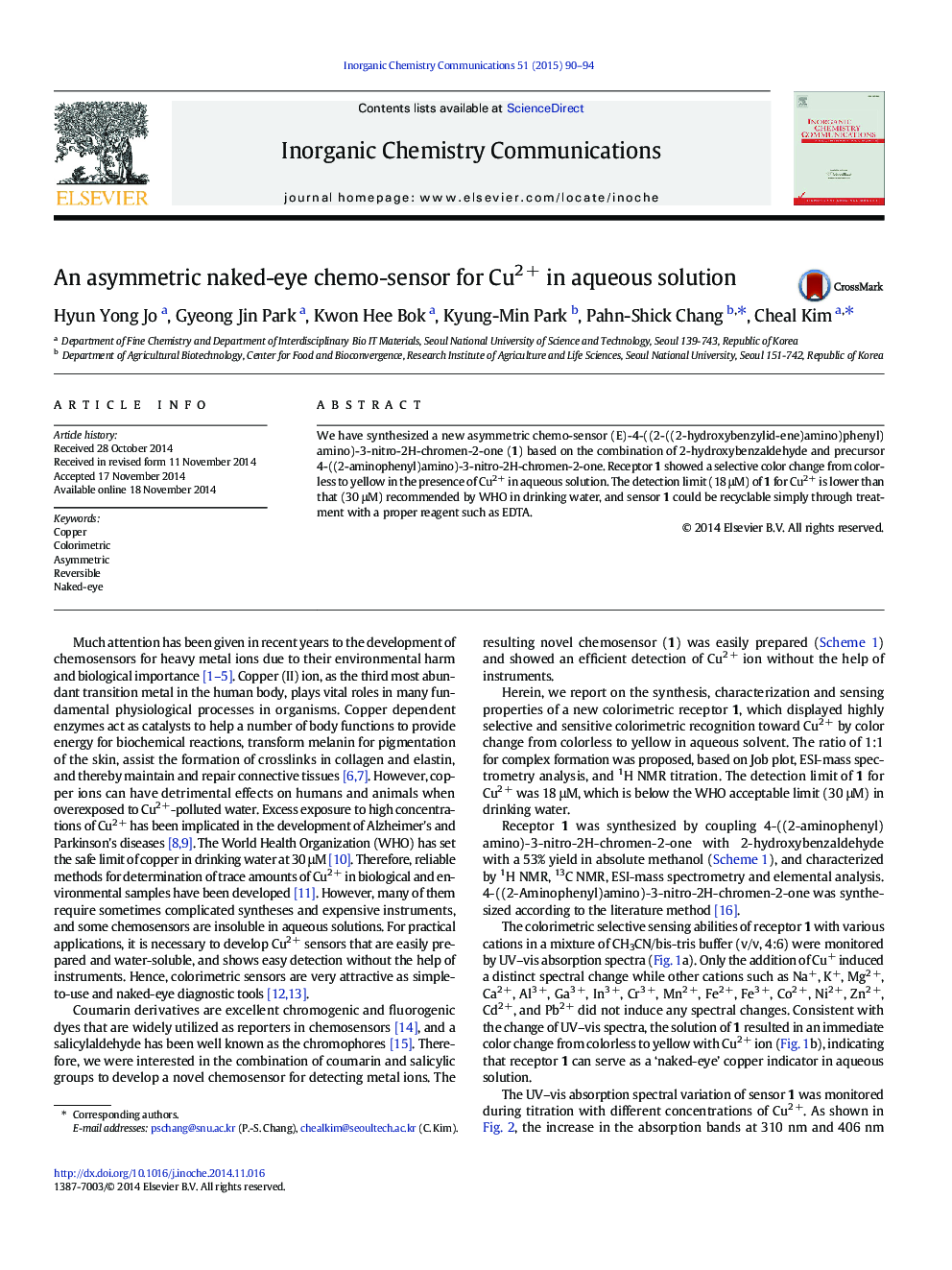| Article ID | Journal | Published Year | Pages | File Type |
|---|---|---|---|---|
| 1303527 | Inorganic Chemistry Communications | 2015 | 5 Pages |
•A novel asymmetric chemo-sensor 1 was synthesized.•Cu2 + resulted in an instant color change of 1 from colorless to yellow.•Sensor 1 could be recyclable simply through treatment with EDTA.
We have synthesized a new asymmetric chemo-sensor (E)-4-((2-((2-hydroxybenzylid-ene)amino)phenyl)amino)-3-nitro-2H-chromen-2-one (1) based on the combination of 2-hydroxybenzaldehyde and precursor 4-((2-aminophenyl)amino)-3-nitro-2H-chromen-2-one. Receptor 1 showed a selective color change from colorless to yellow in the presence of Cu2 + in aqueous solution. The detection limit (18 μM) of 1 for Cu2 + is lower than that (30 μM) recommended by WHO in drinking water, and sensor 1 could be recyclable simply through treatment with a proper reagent such as EDTA.
Graphical abstractA new asymmetric chemo-sensor 1 showed a selective color change from colorless to yellow in the presence of Cu2 +. The detection limit (18 μM) of 1 for Cu2 + is lower than that (30 μM) recommended by WHO in drinking water, and sensor 1 could be recyclable simply through treatment with a proper reagent such as EDTA.Figure optionsDownload full-size imageDownload as PowerPoint slide
